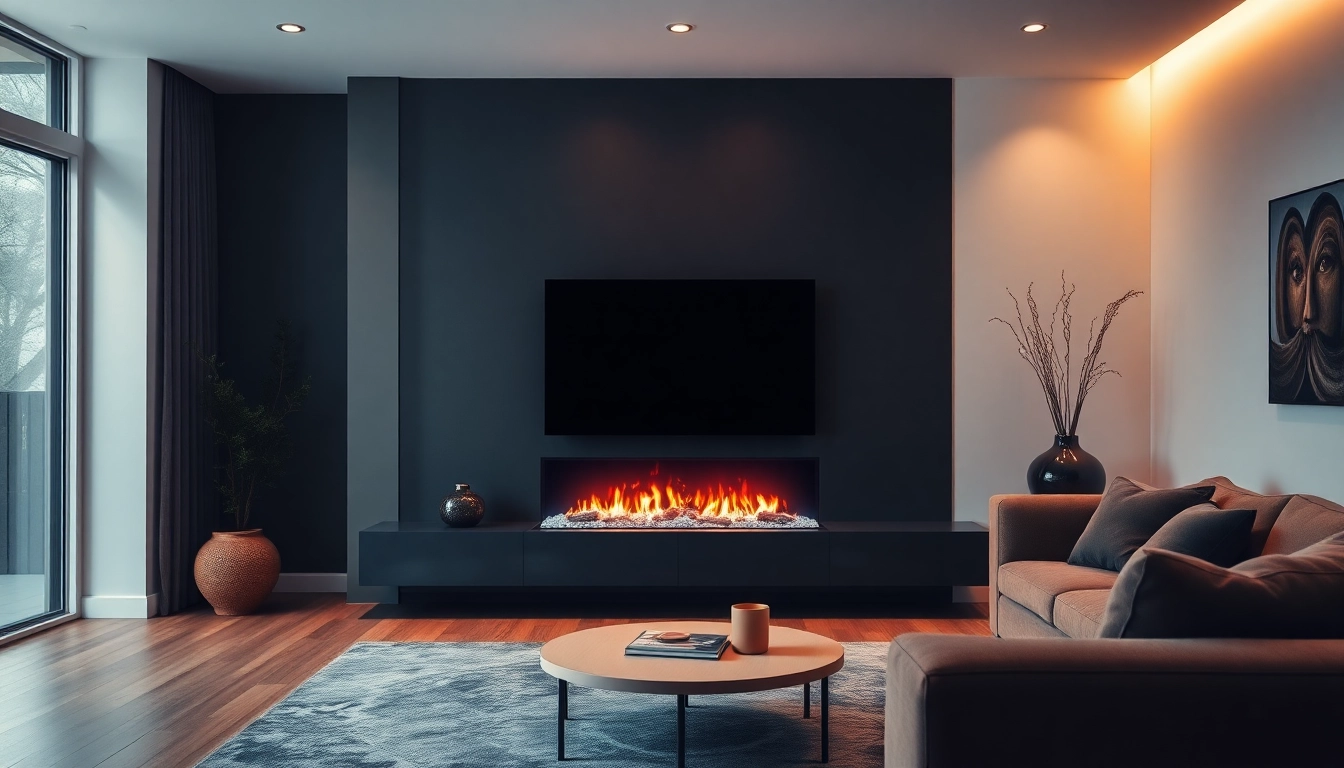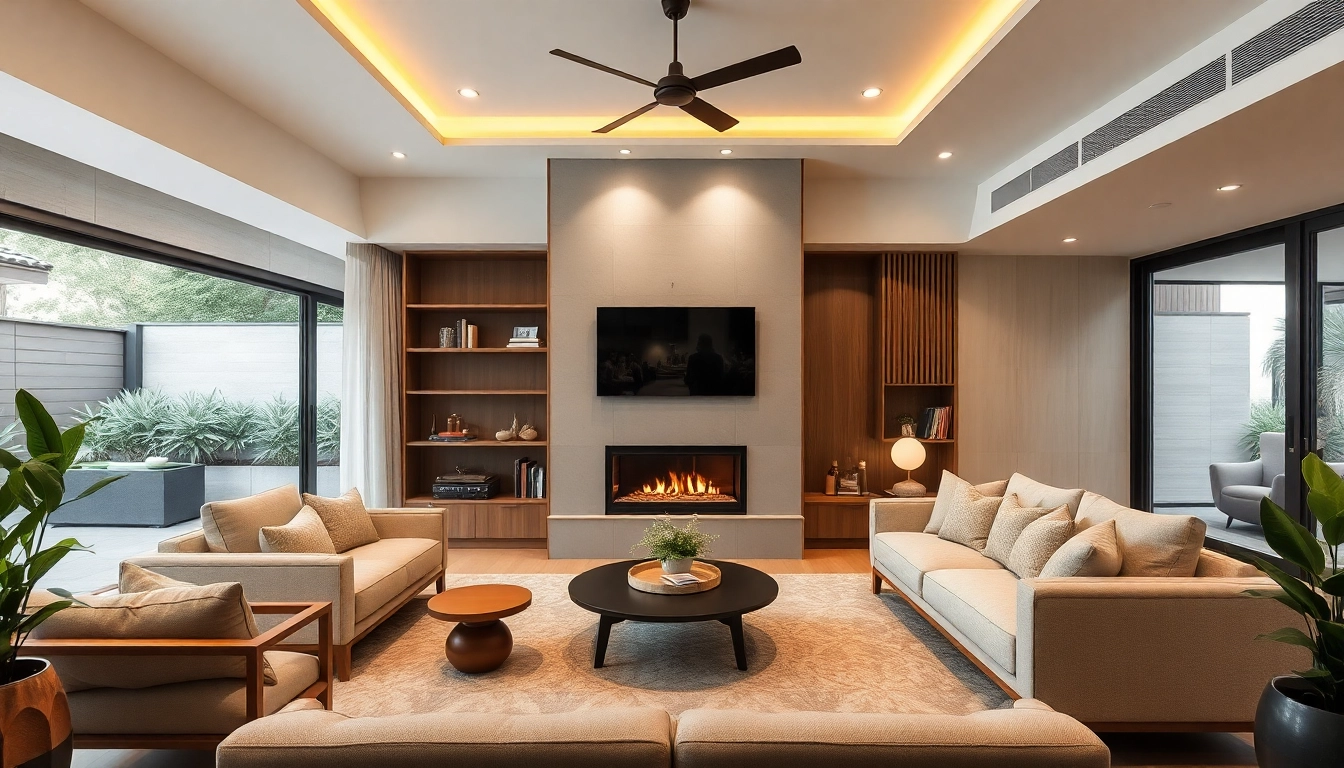Understanding Water Vapor Fireplaces
What is a Water Vapor Fireplace?
A water vapor fireplace, often heralded as an innovative solution combining aesthetic appeal and safety, utilizes advanced technology to create an illusion of flames without generating actual heat. Instead of firewood and combustion, these electric fireplaces employ ultrasonic technology that atomizes water into vapor, producing what looks like flame without the associated risks. This not only contributes to a visually appealing ambiance but also opens up new possibilities for indoor settings where traditional fireplaces may not be suitable. Water vapor fireplaces are particularly favored in homes with children or pets due to their flame-free operation.
How Do Water Vapor Fireplaces Work?
The mechanism behind water vapor fireplaces is fascinatingly straightforward. Upon activation, a device called an ultrasonic transducer vibrates at a high frequency, which causes the water in a reservoir to transform into a fine mist. This mist is illuminated by integrated LED lights, giving the appearance of a flickering flame. Because the mist is composed entirely of water vapor, there are no pollutants or odors — a benefit that aligns perfectly with modern environmental standards. The technology mimics the elusive dance of fire, captivating viewers while ensuring a complete lack of hazardous emissions.
Key Advantages of Using Water Vapor Fireplaces
Water vapor fireplaces offer an array of benefits that make them a compelling option for many homeowners:
- Safety: Being cool to the touch makes them safe for households with children and pets, minimizing the risk of burns.
- Efficiency: Water vapor fireplaces do not consume wood or fossil fuel, aligning with energy-efficient practices that reduce overall costs.
- Ambiance: The visual effect of water vapor mimics the warmth of traditional flames without the harshness and restrictions of real fire.
- Environmental Friendliness: With zero emissions, water vapor fireplaces contribute positively to indoor air quality and environmental sustainability.
- Installation Flexibility: They can be incorporated into various settings, from homes to commercial spaces, making them versatile installations.
Types of Water Vapor Fireplaces
Built-In Water Vapor Fireplaces
Built-in water vapor fireplaces are designed to be integral parts of the room’s architecture. Often installed during construction or renovation, these units blend seamlessly into walls or custom cabinetry. Their aesthetic appeal lies not only in their function but also in their design versatility, accommodating various styles from modern minimalism to classic decor. Because of their permanent installation, built-in models often come equipped with more advanced features, affording users the best performance and design nuance.
Freestanding Models
Freestanding water vapor fireplaces offer flexibility and ease of relocation. These units can be positioned in any part of a room, granting the owner the opportunity to change their interior layout without significant hassle. Although they may have a somewhat more industrial aesthetic compared to built-in models, many are designed to be visually appealing, providing a modern ambiance wherever they are placed. Freestanding fireplaces typically require minimal installation — often just plugging into a standard power outlet — further enhancing their appeal.
Water Vapor Inserts for Existing Fireplaces
For those looking to upgrade or convert traditional fireplaces without major overhauls, water vapor inserts are an ideal solution. These inserts fit seamlessly into existing fireplace structures, providing the desired aesthetic of flames without requiring venting or fuel. Homeowners can enjoy the visual effect of fire without the maintenance, smoke, or hazards associated with traditional models. This innovative approach is perfect for retrofitting into homes where conventional fireplaces are no longer practical.
Installation Considerations
Home Setup Requirements
Before installing a water vapor fireplace, it’s essential to consider the environment. Though many models are simple to set up, the surrounding area must accommodate power sources and any potential water tank requirements. Electrical outlets should be available nearby, and for models that need water connections, appropriate plumbing may be necessary. Considering the room’s humidity levels is also vital, as water vapor can increase indoor humidity, necessitating proper ventilation.
Features to Look for During Installation
Choosing the right features for your water vapor fireplace can enhance the overall experience. Some important aspects to consider include:
- Adjustable Settings: Look for models with adjustable flame heights or lighting options to customize the ambiance.
- Remote Control: Many modern designs come with remote controls for easy operation without leaving your seat.
- Water Level Indicator: This feature helps maintain optimal water levels, ensuring seamless operation.
Professional vs. DIY Installation
For water vapor fireplaces, the installation process can usually be managed by homeowners with basic DIY skills, especially for freestanding models. However, built-in options or complex setups may require professional installation to ensure safe and correct integration within the home’s existing design. Hiring professionals can also provide peace of mind, as they will understand local building regulations and safety standards better than an inexperienced individual might.
Maintenance of Water Vapor Fireplaces
Regular Cleaning and Care Tips
Maintaining a water vapor fireplace is relatively straightforward but requires routine care to ensure optimal performance. Regular maintenance should include:
- Checking the water reservoir regularly and refilling as necessary. If the fireplace has a permanent water line, ensure it is free from clogs.
- Cleaning the ultrasonic transducer annually to prevent mineral buildup, which could diminish performance.
- Wiping the unit with a damp cloth to remove dust and prevent any potential water stains.
Common Issues and Solutions
Though water vapor fireplaces are generally reliable, issues can still arise. Here are some common problems along with their solutions:
- Low Mist Production: Check the water levels and cleaning status of the transducer, as mineral buildup may have inhibited its function.
- Flame Color Issues: Examine the light settings if the flame appears dull or lacks vibrancy. Reset the color settings to ensure they’re functioning properly.
- Water Leaks: If the unit is plumbed, inspect connections for tightness or corrosion. Tighten any loose fittings to prevent leaks.
Maintenance Schedule Recommendations
Establishing a maintenance schedule is crucial for longevity. General guidelines include:
- Daily: Check water levels.
- Weekly: Clean the transducer and exterior.
- Monthly: Inspect for leaks if using water line connections and ensure all electronic components are functioning correctly.
- Yearly: Consider a professional inspection to maintain optimal efficiency and safety.
Choosing the Right Water Vapor Fireplace
Brand Comparisons and Options
The market is teeming with options when it comes to water vapor fireplaces, with numerous brands offering varying features, price points, and aesthetics. Notable brands to consider include:
- Aquafire: Well-known for advanced models that combine functionality and striking aesthetics.
- Dimplex: Offers a solid reputation for high-quality electric fireplaces, including their famous Opti-Myst series.
- Modern Blaze: Offers a wide range of modern and stylish options tailored for different home styles.
Price Ranges and Best Deals
The price of water vapor fireplaces can vary widely based on factors such as size, features, and brand. Here’s a general breakdown:
- Simple freestanding models can start around $200 to $600.
- Mid-range options, especially those with more features or larger sizes, typically range from $600 to $1,200.
- High-end built-in models can go upwards of $1,200, depending on customizations and brand.
Customer Reviews and Recommendations
When selecting a water vapor fireplace, consider customer feedback to gauge satisfaction levels with different products. Reviews often highlight performance, ease of installation, and aesthetic appeal, providing valuable insights into real-world usage. Websites offering customer reviews or fireplace-specific forums can also guide potential buyers towards the right choice based on shared experiences from other users.


